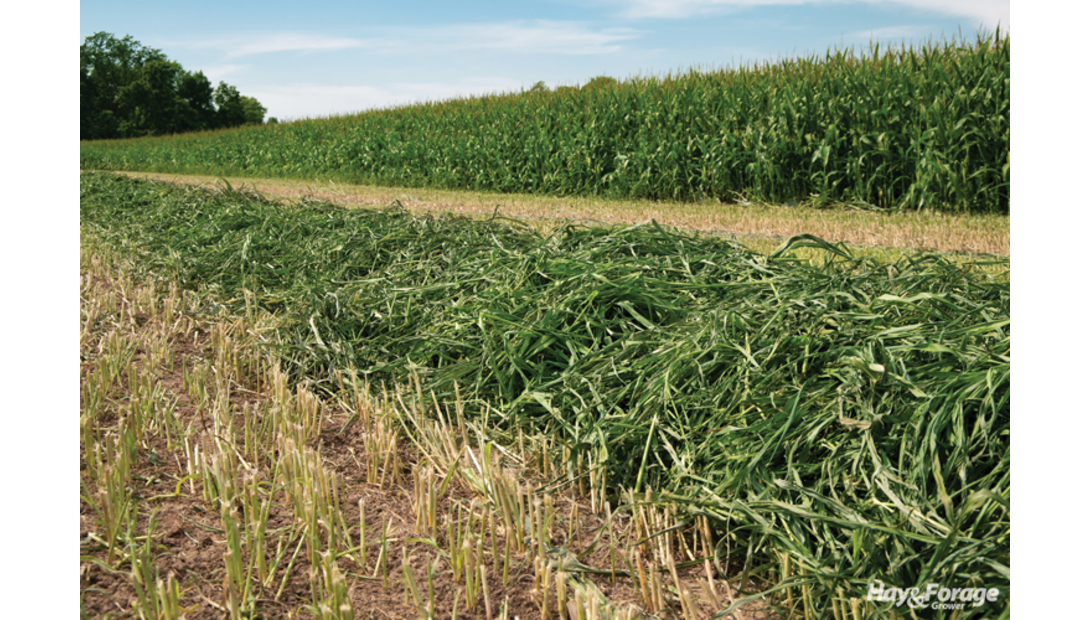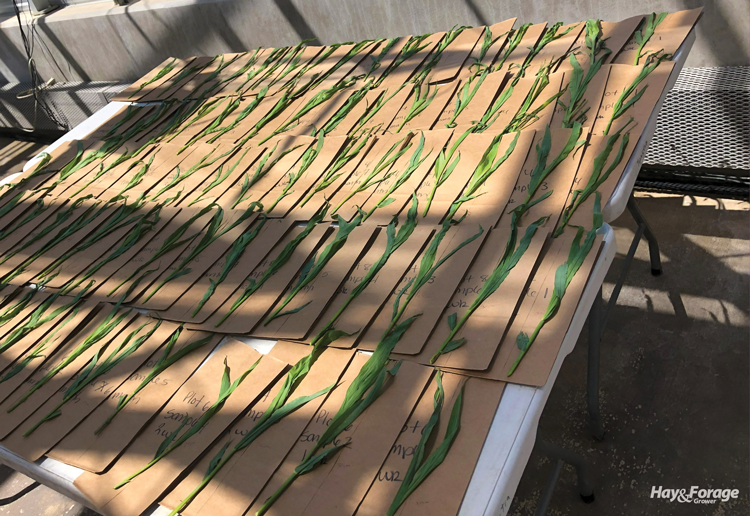The author is the state forage specialist with Iowa State University.

Forage sorghum, sorghum-sudangrass, and sudangrass are all excellent options for warm-season annual forage species that can produce large amounts of biomass, especially in drought years or when you are running short on forage. These species can be grazed or harvested for hay within 35 to 40 days of growth under the right growing conditions.
Although sorghum species can pose a risk of prussic acid poisoning, it is possible to safely and effectively utilize these types of forage with proper management. The breakdown of dhurrin, a secondary metabolite found in sorghum species, leads to the release of prussic acid, which highlights the importance of understanding and managing this aspect of plant physiology for safe and effective utilization of sorghum forage.
Proper management strategies to mitigate the effects of prussic acid poisoning include avoiding grazing livestock on plants under 18 inches tall as young plants can have higher prussic acid potential. It is also critical to avoid grazing plants that have undergone frost stress for at least one week (rolling suggestion), and to avoid utilizing plants that have been under drought stress. These conditions tend to elevate the dhurrin content present in the crop, and thus the potential for prussic acid poisoning. Additionally, when prussic acid is a concern, cutting for silage, green chop, or hay is traditionally recommended.
The chopping action of harvesting sorghum species for silage and greenchop can help cause a breakdown of dhurrin and release of prussic acid before feeding. Furthermore, animals cannot be as selective with what plant tissues they choose to eat as they may be when they are in a grazing system. It is important to note that leaves contain higher dhurrin content than stems. After chopping forage, the fermentation process of silage may reduce dhurrin content even more.
Making hay has been previously reported to mitigate prussic acid poisoning potential in sorghum species by up to 75% during the sun-curing process. Despite this, the lab I worked for at Purdue University received a call from a Kansas farmer back in 2020 asking how he killed his cattle by feeding them sorghum-sudangrass hay. Through initial investigation, the cause of death was identified to be prussic acid toxicity, which contradicts the idea that dry down and sun curing equates to safe sorghum hay.

Dhurrin was stable in hay
As a result of the situation in Kansas, we wanted to evaluate how dhurrin content is affected by dry down through sun curing and storage for up to two months. Through a series of trials, we dried sorghum leaves and whole sorghum plants in the greenhouse, allowing for direct and indirect sunlight without the risk of forage being rained on or other inclement weather concerns. We found that during the drying period and sun-curing process, dhurrin content remained stable, and it did so for at least two months in the dry hay material. Additionally, another research study found dhurrin to be stable in oven-dried material for up to 10 years, suggesting it could be stable for much longer in sun-cured forage material.
Dhurrin is only inherently dangerous if it is broken down into prussic acid. When testing forage for prussic acid release using water for rehydration, there was a significant delay in prussic acid being released. After discovering this, we then wanted to test what would happen when dhurrin is broken down in a cow’s rumen. Using rumen fluid from a fistulated dairy cow, we found prussic acid was quickly being released from the dried samples. In fact, treated paper disks inserted in the vials containing forage samples changed color within about 15 minutes after adding the rumen fluid. More information on how this study was conducted and the results can be found at bit.ly/HFG-dhurrin-breakdown.
Opt for silage
So, what does this mean for producers? Our research indicates that drying or sun curing forage does not necessarily reduce prussic acid poisoning potential, highlighting the importance of careful forage management. For those concerned with high dhurrin levels, it is recommended to cut for silage or potentially green chop, but making hay will not help alleviate high prussic acid concerns. This emphasizes the need for ongoing research and awareness to ensure the safety and effectiveness of sorghum-based feeds.
In conclusion, sorghum, sorghum-
sudangrass, and sudangrass offer valuable benefits as warm-season annuals for biomass production, especially under unprecedented growing conditions or when forage is scarce. While prussic acid poisoning poses a risk, proper management strategies such as avoiding grazing on young or frost- and drought-stricken plants and opting for silage or greenchop can mitigate these dangers.
This article appeared in the July XL 2024 issue of Hay & Forage Grower on pages 32-33.
Not a subscriber? Click to get the print magazine.

